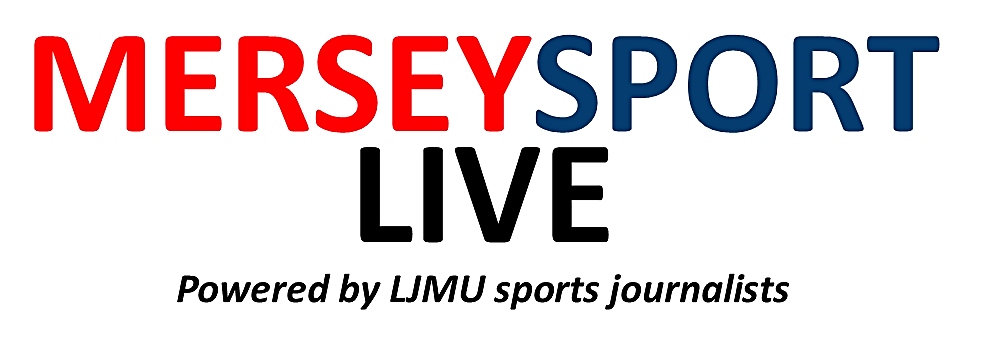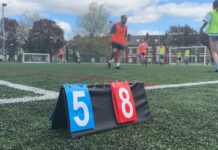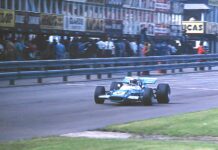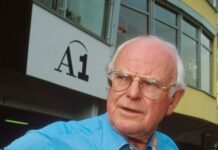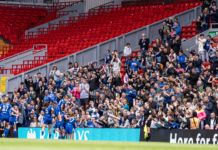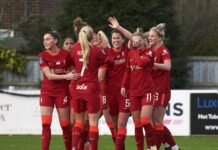This weekend, Aintree Racecourse will play host to the 173rd Grand National.
The venue is of course synonymous with horse racing, much like Augusta and golf, Wimbledon and tennis, Lord’s and cricket.
But it also occupies a lesser-known chapter in the history books of Formula 1.
On five occasions between 1955 and 1962, Aintree hosted the British Grand Prix.
“It seemed odd to be going to a big industrial town for a motor race,” recalled veteran journalist Bill Boddy. “Goodwood was in the open Sussex countryside, as Brooklands had been in Surrey, and most other circuits were similarly situated.”
But in the mind of the circuit’s owner, Mirabel Topham, Aintree was to break that mould, establishing itself as the ‘Goodwood of the North’. Work on what was expected to be a lucrative motor racing project began in 1953.
A year later, the circuit was complete, and an agreement was struck with Silverstone to host the race on an alternating basis.
100,000 spectators every year
Though the North West was by no means the traditional Formula 1 heartland, the event was hugely popular at the outset.
Maybe even too popular, as Nick Garton, a Formula 1 historian whose father was a steward at the event, explains to Mersey Sport Live:
“The inaugural Grand Prix was well catered for by the Liverpool police, who were in charge of keeping people off the sacred turf of the racecourse.
“They came in for a lot of criticism for being rather too forceful in their approach and paid no heed to whether it was a ticket holder, journalist or even a driver whom they were manhandling.
“Of course the sheer number of people who came to watch the races at Aintree – more than 100,000 on each year that Formula 1 paid a visit – was a contributor to the fractiousness, but the events are remembered fondly all the same.”
The locals may have embraced F1, but the commentators, whose updates were broadcast around the circuit on loudspeaker, struggled to get to grips with it.
They had to resort to some ‘wild guesses’ about the identity of the competitors, Motor Sport Magazine’s Denis Jenkinson wrote in his report.
“The drivers would have died laughing,” he speculated.
Dangerously fast
Aintree’s Northamptonshire partner Silverstone was originally a wartime airfield. Elsewhere in Europe, ‘grand old circuits’ like Germany’s Nurburgring and Belgium’s Spa-Francorchamps weaved through medieval villages and mighty forests.
The Aintree circuit could not match those venues for character – Garton points to ‘regular radius bends’ and ‘little undulation’ – but it was immense in its sheer speed:
“It was extremely fast,” he marvels. “It was dominated by the long flat-out blast from the apex of Beacher’s Bend all the way down the Railway Straight to the chicane at Melling Crossing.”
With each running of the race, speeds crept up. Between the first edition in ’55 and the last in ’62, lap times dropped by more than six seconds.
It became increasingly dangerous, particularly because there was so little room within the confines of the racecourse for run-off areas. In some places, the track was bordered by concrete pillars.
Formula 1 decided to move on, returning to South East of England in 1964 after agreeing a deal with Kent’s Brands Hatch circuit.
But they did allow Aintree the courtesy of hosting back-to-back British Grands Prix before slipping off the calendar, despite grumblings from Silverstone.
Clark’s Grand Chelem on Aintree farewell
The 1962 season saw an all-British title tussle between Londoner Graham Hill, father of 1996 World Champion Damon, and Scotsman Jim Clark.
Clark arrived on Merseyside only fourth in the Championship, seven points adrift of leader Hill, after failing to finish the previous race in France.
His Lotus 25 was plagued by mechanical failures, but it was revolutionary in its design.
On this occasion, it ran smoothly enough for Clark to blitz the field. He beat John Surtees to pole position by a full six-tenths of a second.
Well, roughly six-tenths. Nowadays, sensors embedded in the tarmac ensure accuracy down to the nearest thousandth. In 1962, the Aintree officials were still using rudimentary egg-timers.
Still, there was no disputing Clark’s dominance.
“It is uncanny the way he seems to say ‘I will now set a fastest lap’ and goes out and does just that,” Jenkinson enthused. “One day [the Lotus] will be spot-on to everyone’s satisfaction and Jimmy Clark will do a really fast lap!”
Predictably, given the pole margin, Clark streaked clear on race day. Only sportsmanship prevented him lapping his championship rival Hill, who finished a distant fourth.
The victory represented the first Grand Chelem of Clark’s career – pole position, a lights-to-flag race win and the fastest lap.
Surtees held down second place, with the battle for third providing most of the entertainment. It was eventually won by New Zealand’s Bruce McLaren, founder of the eponymous team.
Clark closed to within a point of Hill in the world championship with four races remaining, but retirements at the Italian and South African Grands Prix would ultimately put pay to his title ambitions.
The following year, in a comparatively bullet-proof Lotus, he was the inevitable champion. A second crown followed in 1965.
By then, Aintree’s Grand Prix track had hosted its last major international motor race.
Aintree Motorsport in the 21st century
In 2004, to celebrate the fiftieth anniversary of its opening, 250 iconic racing cars convened at Aintree for a Festival of Motorsport, attracting 20,000 spectators. The late Sir Stirling Moss, who claimed the first of his 16 F1 wins on Merseyside in 1955, was among those in attendance.
The full loop is no longer usable – flower beds, tractor sheds and speed bumps have seen to that – but a smaller configuration of the circuit is still used for motorcycle races, four-wheel action and the television camera car which keeps pace with the pack on Grand National weekend.
Main image by John Goldsmith. Licensed under Creative Commons.
